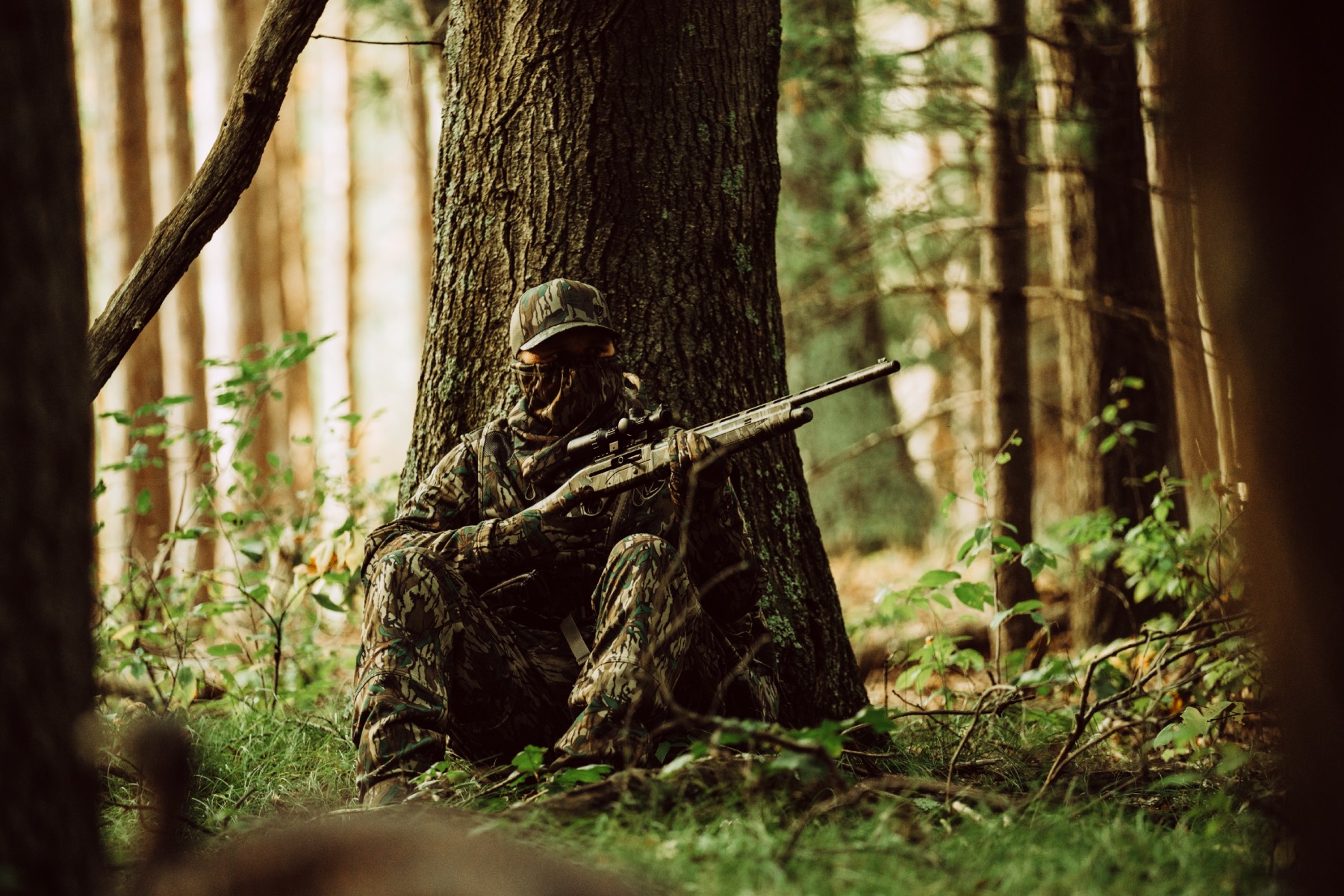
Sometimes sleeping in, or sticking it out through late morning can be a productive approach.
Written by Bob Humphrey
The first few hours were filled with excitement but frustrating. Though my blind was surrounded by birds, none closed the requisite distance into range. The sun was high and the shade of a mesquite tree and a slight breeze through the windows offered little respite from Texas heat. Even the songbirds were taking a siesta and with hours to go before my ride arrived I chose to do likewise.
My feeble attempt at a nap was interrupted by a distant gobble. “The game begins anew,” I thought, glancing at my watch: 10:30. My calling got the same initial reaction it had in the morning, a rolling rondolet of Rios, quite likely some of the same I’d dueled with earlier. But this time their approach was more rapid and direct. I’d barely clearly the sleep from my eyes when tan-tipped fans began appearing over the brush, and three strutters boldly entered the arena. Only two left.
When I started turkey hunting I did what most hunters do: hit the woods before dawn and hunted hard until the gobbling stopped, then headed off to work. Back then and for many years after, legal hunting ended at noon so I never experienced afternoon hunting. It wasn’t until I began traveling that I really learned the err of my ways, though I should have figured it out sooner. I’ve since discovered that hunting “up in the day” is not only productive, but sometimes has its advantages.
Post Rush Hour
One of the greatest advantages is far less competition, which is particularly important on public ground where sometimes it’s hard to tell hunters from turkeys with all the calling. This really hit home for me one morning when, after an unsuccessful first shift I hit the road to do a little windshield scouting. Driving into a spot I couldn’t hunt at daylight because of too many vehicles, I spied a strutter in the middle of an open field. His tardiness proved fatal.
Lookin’ for Love
Late morning turkey hunting is like a microcosm of the fall whitetail rut. It’s breeding season and males are seeking females, which are up and about and actively moving around in the early morning hours. The spectacle of strutting, gobbling and calling is worth the price of admission, even if you go home empty. But the show’s not over yet.
Most turkey seasons are set so that most of the hens have been bred before hunters hit the woods. As the morning winds on, hens filter out of the flocks and off to tend their nests. Soon the toms find themselves alone and like a randy buck toward the tail end of the rut, may redouble their efforts to find a female, making them more susceptible to calling. It’s a lot easier to make a bird gobble in the morning, but if you can get him to do it at midday, your odds of killing him are much higher.
The Wanderer
Like commuters, turkeys always seem like they have a destination at dawn. If you’ve done your scouting you can exploit that, sometimes. Unlike wage earners, they don’t always take the same route to work. As the day wears on their wanderings become more random. They might still be headed some place, but can be more easily dissuaded. If not, go back to your scouting journal, where you should find a few notes on midday ambush spots.
The Lunch Counter
It helps if you know what turkeys do when the sun is high in the sky. They’re gallinaceous birds, and after filling their crops with food at first light, may peck gravel, which they ingest to aid digestion. That’s usually not hard to find but if it is, and you find it, that might be a good place to stake out.
With enough calories in their crop to make it through another day they can now turn their attention to more routine tasks like feather maintenance. They’ll stand and preen, sometimes for hours. They also take dust baths in fine silty or sandy soil to rid themselves of parasites like feather lice. Once you develop a search image you’ll recognized these shallow bowls, and usually find feathers and lots of foot prints around them; another good ambush location.
Anyone who’s ever hunted Texas or other arid areas knows how much of a magnet water can be, especially during the heat of the day. Like the proverbial water cooler at the office, shallow pools, tanks and even water troughs are often regular stops to break up the midday routine.
Third Shift
Unlike humans, turkeys don’t take lunch breaks. But as the day grows long their crops grow empty and they start what might best be described as the afternoon equivalent of brunch. Daylight tends to make for a more slow, protracted start, but their goal is to re-fill their crops before going to roost. Find the food and you’ll find the birds, especially if it’s nearer to roosts.
That brings up an important point. It can be very tempting to hunt near a roost late in the day but you should do so sparingly. Like ducks on a roost pond, turkeys often return to regular roosts in the evening, and if you ruin their routine you’re back to square one in terms of scouting. Leave the birds alone for the last couple hours. Then go back and start all over again in the morning. Heck, you might even want to sleep in.



























